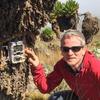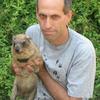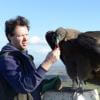Ivory ID using portable molecular sensors?
1 July 2016 4:01pm
26 July 2016 4:40pm
Thanks, @Peter+Apps . I reached out to ConsumerPhysics for more information. They said that scanning animal ivories for identification purposes is likely to be feasible with SCiO and that others may be considering this application as well.
They confirmed that SCiO uses NIR spectroscopy for classification between different substances, providing that the molecular fingerprints are different enough from each other. It sounds like they did a basic feasibility test that "showed promise in classifying ivory samples from different kinds of animals - elephant, mammoth, hippopotamus and walrus, as well as plastic mock-ivory samples. The corresponding molecular sensing models and applications will have to be developed further for better insight. This may be developed in the future either by us or by the SCiO developer community using the SCiO Development Toolkit, which allows users to create models and apps."
They suggested that a user would need to take two things into consideration when working toward this application: "First, as SCiO’s detection threshold varies by material, and is typically 0.1%-1%, some micro-nutrients will not be detectable. This requires further research. In addition, it should be noted that building the database for such an application requires access to samples and their chemical characteristics."
More info on DevKit SDK is online here: https://www.consumerphysics.com/myscio/developers/ and here: https://www.youtube.com/watch?v=6wDLSF0ZkIA. I have no experience with this technology and no connection to ConsumerPhysics, but it sounds interesting.
I think this could be a good research project for someone in the WILDLABS community. With the scope of our network, gaining access to samples should not be a challenge.
26 July 2016 7:06pm
It sounds like @David+Baisch at Conservation X Labs just ordered a SCiO spec and developer's kit to test its sensitivity. They're interested in seeing whether the device can be used to differentiate beteween tree species in treated and untreated wood products. Looking forward to learning more about that process!
How can technology help us monitor those small cold-blooded critters that live in caves?
25 July 2016 12:00am
Video: Discover the SMART Approach
 The SMART Partnership
The SMART Partnership
20 July 2016 12:00am
Wildlife Tracking Equipment Grants from Holohil Transmitters
20 July 2016 12:00am
Discussion: 360° Camera for Arboreal Camera Trapping
19 July 2016 2:38pm
Article: Drawing Eyes on Cow Butts May Ward Off Hungry Lions
19 July 2016 7:25am
Camera traps reveal mysteries of nature
18 July 2016 12:00am
SoundTrap: Developing low-cost tools for acoustic ecology
15 July 2016 12:00am
New rhino poaching report out
11 July 2016 1:36pm
Can Drones Live up to the Hype?
8 July 2016 12:00am
Discussion: Self-powered camera trap
24 November 2015 7:36pm
1 December 2015 6:27pm
I was initially thinking of dozens or maybe even hundreds of nodes coming back to a central wired connection point. I wonder if something like Google's project Loon could work in place of an on-the-ground network.
But stepping back from the tech for a moment, really the problem we're trying to solve here is being able to have remote monitoring cameras that don't need anyone to go out to change batteries or memory cards. After salaries, vehicles/transportation is the top expense at pretty much all of the conservation partners we have. Anything we can do to reduce the travel (and the time of the people as well) is huge.
1 December 2015 6:37pm
So, in terms of power, does the "classic" solution with a set of solar panel cells on top of the box have some major flaws? I'm pretty sure I've seen self-powered meteo stations looking like this positioned along motorways/higways (don't remember what country or even a continent was it :-) Not being an expert in photo-voltaics, I would risk saying that a purposely-designed cell pointing up, directly at the sun, will have better efficiency than a re-purposed CMOS censor :-)
And indeed, talking to something overhead (either the baloons or Facebook's drones - forgot the name - or maybe even satellites?) would be probably much simpler than ground-based communication. If we had big enough energy budget, the communication channel would be "relatively easy" to implement...
4 July 2016 11:51am
Some camera trap manufacturers offer solar power as an add-on or option off the shelf. I agree that using the image seems like a solution looking for a problem.
The Highs and Lows of Camera Traps for Rapid Inventories in the Rainforest Canopy
4 July 2016 12:00am
Performance of GPS-collars in wildlife research: what does the evidence show?
22 February 2016 12:56pm
26 February 2016 2:12pm
Fantastic, thanks Maarten! I've shared your response with Abby, so hopefully you'll have some info coming your way very soon.
1 July 2016 4:28pm
Hi Maarten,
I'm curious to hear how the survey went and at what stage you're at. Do have any preliminary results to share yet? Anything expected/unexpected come out of the surveys, or big questions that our community could mull over?
Steph
2 July 2016 3:27pm
Hi Steph,
the survey is closed now, and I'm in the process of screening data. I hope to start with the analysis soon.
So unfortunately, nothing new or exciting yet...
Maarten
Passive Acoustic Monitoring: Listening Out for New Conservation Opportunities
29 June 2016 12:00am
Tiger, Tiger, Being Tracked - Science Talk with Ullas Karanth
27 June 2016 3:09pm
WWF develops a new technology to stop poachers in their tracks
27 June 2016 12:00am
CASTING AMERICA'S GREATEST MAKERS! SPECIFICALLY LOOKING FOR WILD LIFE CONSERVATION TOOLS/INVENTIONS.
24 June 2016 9:14pm
Acoustic monitoring for locating wolf packs
26 March 2016 12:01am
13 April 2016 5:20pm
Greetings everyone,
I apologize for being somewhat absent in this thread as of late. But, I am very interested in this conversation regarding building a recorder with a decent localization platform (including the sound detection for gunshots!). If the discussion continues outside of this thread (i.e. an email chain), please include me in it as well! I can provide my email through private message.
13 April 2016 6:28pm
Hello all- When there are future updates with this project, please do continue to post them to this thread as it progresses. Thanks! The community would love to see updates.
24 June 2016 9:38am
For those who are interested in this thread, Arik has posted his new prototype in a new thread, where the discussion has continued.
Wildlife Crime Tech Challenge Accelerator Bootcamp
24 June 2016 12:00am
Solar Impulse 2 completes first ever Atlantic crossing by solar plane
23 June 2016 10:00am
A 3D printable, drone and ROV-mountable, water sampler
22 June 2016 4:28pm
Science Makers: sensor networks on 2 July
22 June 2016 8:09am
22 June 2016 4:04pm
Thanks for sharing this event, Jenny! Looks really interesting, hope to see you there.
How the ‘animal internet’ sheds light on the secrets of migration
22 June 2016 12:21pm
Portable DNA Sequencer
24 March 2016 4:51pm
26 April 2016 6:53pm
Thanks, Adam, for initating a discussion about the MinION. It certainly seems to have a lot of promise, however the scientists who are currently field testing it detect very high error rates. It's been on my radar as a possible field kit for extracting DNA out of wood as it gets processed into various forest products through the supply chain. The implication here is that the part of a tree that is made into forest products is made up of dead cells and thus it is very difficult to extract quality and quantity DNA out of wood. This, combined with the high error rates makes it 'still very much in development' for forest products - but perhaps it'd be suitable sooner for other applications in the conservation world. There's a professor at New Mexico State Univ. who has been working with the MinION for a while now on wood - Brook Milligan. He recently gave a talk at the 'London Calling' Oxford Nanopore (maker of the Minion) conference that is worth watching: https://londoncallingconf.co.uk/2015/videos/view/241
22 June 2016 10:43am
Hi John and Adam,
I've been hearing a lot about Oxford Nanopore Technologies and MinION over the last few months, and while it sounds fanastic, it's been difficult to get an understanding about the potential and limitations of this piece of tech, particularly as relates to conservaiton applications. So hearing your experiences, John, is really interesting.
For anyone interested in learning more about MinION and nanopore technology, I've just came across a thorough article in the Atlantic about the sequencer that was helpful for me as a total novice (though a very interested one!) in the world of nanotechnology and eDNA. It gives context to the MinION in terms of history, current applications and potential applications. It also features one of our community members, Jon Whetton, who is also a USAID Wildlife Crime Tech Challenge Winner, talking about the potential applications to conservation:
The etymology of VolTRAX may be farcical, but its purpose is not. This domino-sized add-on for the MinION is designed to prepare a biological sample—say bodily fluids, or swabs of soil—for sequencing. It moves liquid through a network of fine channels, bombards it with chemical reagents to extract DNA, and loads that DNA into the MinION. “We spend a lot more time in the lab preparing samples than we do sequencing,” says Loman. “If, and it’s a big if, you could drop the clinical sample onto the chip that does it all for you, it would be hugely advantageous.”
VolTRAX is set to go out to early users this summer. Jon Wetton, a geneticist and forensic scientist at the University of Leicester, wants to use it to fight illegal wildlife trafficking, by sequencing telltale genes that act as identity badges for different species. Conservationists have already used this technique, known as DNA barcoding, to track sources of elephant ivory or identify whale meat posing as sushi. But samples must be shipped for analysis, and “you’re looking at weeks or months to get the results back,” says Wetton. “That can’t be done on anything perishable, or if you’ve got a suspect in custody. But with an on-the-spot test, you could confiscate, arrest, or do something about it.”
With a nanopore sequencer, inspectors could tell the difference between a cut of beef or bushmeat from threatened apes and monkeys. They could analyze the blood on a suspected poacher’s tools to reveal the identity of the last animals it cut. They could work out if seized caviar belong to legitimate fish species or endangered sturgeon. “You could answer a whole slew of serious wildlife crime issues with the same test,” says Wetton.
That still leaves the significant problem of parsing the data, but Oxford Nanopore has a solution for that, too: an online hub called Metrichor, where people can connect to ready-made apps for analyzing DNA sequences. One such app, developed by Oxford Nanopore itself, is called “What’s In My Pot?” or WIMP. It takes sequences and identifies the organisms they belong to. The team have already field-tested it on microbes from a sewage-contaminated river behind their own building, and on unpasteurized milk from the back of a New York lorry.

Apply now for the 2016 Annual Geo for Good User Summit
16 June 2016 12:40am
Digitising powerlines in bird migratory pathways
14 June 2016 8:53pm
Sustainable Palm Oil Transparency Toolkit (SPOTT)
8 June 2016 12:00am
Computer Vision to Identify Individual Animals
29 May 2016 4:52am
6 June 2016 11:17am
Hi Jason,
Thanks for sharing this demo, it's interesting to see the fluke id process in action. Is this part of the flukebook project? How do you see the project progressing - are there opportunities for people to get involved or challenges it would be helpful to get outside input on?
Cheers,
Stephanie
How Open Source Technologies Could Dramatically Reduce the Cost of Tagging Green Sea Turtles
27 May 2016 12:00am
May Meetup: Wolf detectors, Multispectral Cameras and Gorilla Radios
24 May 2016 2:13pm





















12 July 2016 7:37pm
There are so few details on the link that it is not possible to judge whether that particualr hardware will be any use for anything. I suspect that it used near infra-red which has some applications for bulk anayses of foods but I doubt that it could distinguish different types of animal ivory. It might be able to discriminate between vegetable and animal ivory.